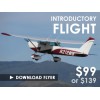The commercial license allows a pilot to earn money while flying; however it is limited to a number of specific areas. See §119.1 for a complete list. If your intention is to fly for an airline or air charter, you will be using your Commercial Pilot’s license under Part 121 or Part 135 regulations. Here’s an example of what you can do with a Commercial Pilot’s license:
You may be hired by an individual or a company to fly their aircraft
Flight instructing if you hold a Flight Instructor’s certificate
Ferry or training flights
Aerial work operations, including crop dusting, seeding, spraying, and bird chasing
Banner towing
Aerial photography or survey
Fire fighting
Power line or pipeline patrol
Nonstop flights conducted within a 25-statute-mile radius of the airport of takeoff carrying persons or objects for the purpose of conducting intentional parachute operations.
You will want to hold an Instrument Rating before you undertake your Commercial Pilot’s license because there are further restrictions placed on you such as cross-country flights in excess of 50 nautical miles, or at night are prohibited.
The Commercial Pilot’s License Requirements
You must pass an Aeronautical Knowledge Exam §61.125
Applicable Federal Aviation Regulations of this chapter that relate to commercial pilot privileges, limitations, and flight operations;
Accident reporting requirements of the National Transportation Safety Board;
Basic aerodynamics and the principles of flight;
Meteorology to include recognition of critical weather situations, windshear recognition and avoidance, and the use of aeronautical weather reports and forecasts;
Safe and efficient operation of aircraft;
Weight and balance computations;
Use of performance charts;
Significance and effects of exceeding aircraft performance limitations;
Use of aeronautical charts and a magnetic compass for pilotage and dead reckoning;
Use of air navigation facilities;
Aeronautical decision making and judgment;
Principles and functions of aircraft systems;
Maneuvers, procedures, and emergency operations appropriate to the aircraft;
Night and high-altitude operations;
Procedures for operating within the National Airspace System
Flight Proficiency §61.127
Preflight preparation;
Preflight procedures;
Airport Operations
Takeoffs, landings, and go-arounds;
Performance maneuvers;
Ground reference maneuvers;
Navigation;
Slow flight and stalls;
Emergency operations;
High-altitude operations;
Postflight procedures.
Aeronautical Experience §61.129
In order to be eligible for the Commercial Pilot Practical Exam you must log at least 250 hours of flight time as a pilot that consists of at least:
100 hours in powered aircraft, of which 50 hours must be in airplanes.
100 hours of pilot-in-command flight time, which includes at least—
50 hours in airplanes; and
50 hours in cross-country flight of which at least 10 hours must be in airplanes.
20 hours of training on the areas of operation listed in §61.127(b)(1) of this part that includes at least—
10 hours of instrument training (You probably already hold an Instrument Rating)
10 hours of training in an airplane that has a retractable landing gear, flaps, and a controllable pitch propeller.
One 2-hour cross country flight in a single engine airplane in daytime conditions that consists of a total straight-line distance of more than 100 nautical miles from the original point of departure. (Dual)
One 2-hour cross country flight in a single engine airplane in nighttime conditions that consists of a total straight-line distance of more than 100 nautical miles from the original point of departure.
Ten hours of solo flight time in a single engine airplane or 10 hours of flight time performing the duties of pilot in command in a single engine airplane with an authorized instructor on board
One cross-country flight of not less than 300 nautical miles total distance, with landings at a minimum of three points, one of which is a straight-line distance of at least 250 nautical miles from the original departure point.
5 hours in night VFR conditions with 10 takeoffs and 10 landings (with each landing involving a flight in the traffic pattern) at an airport with an operating control tower.













